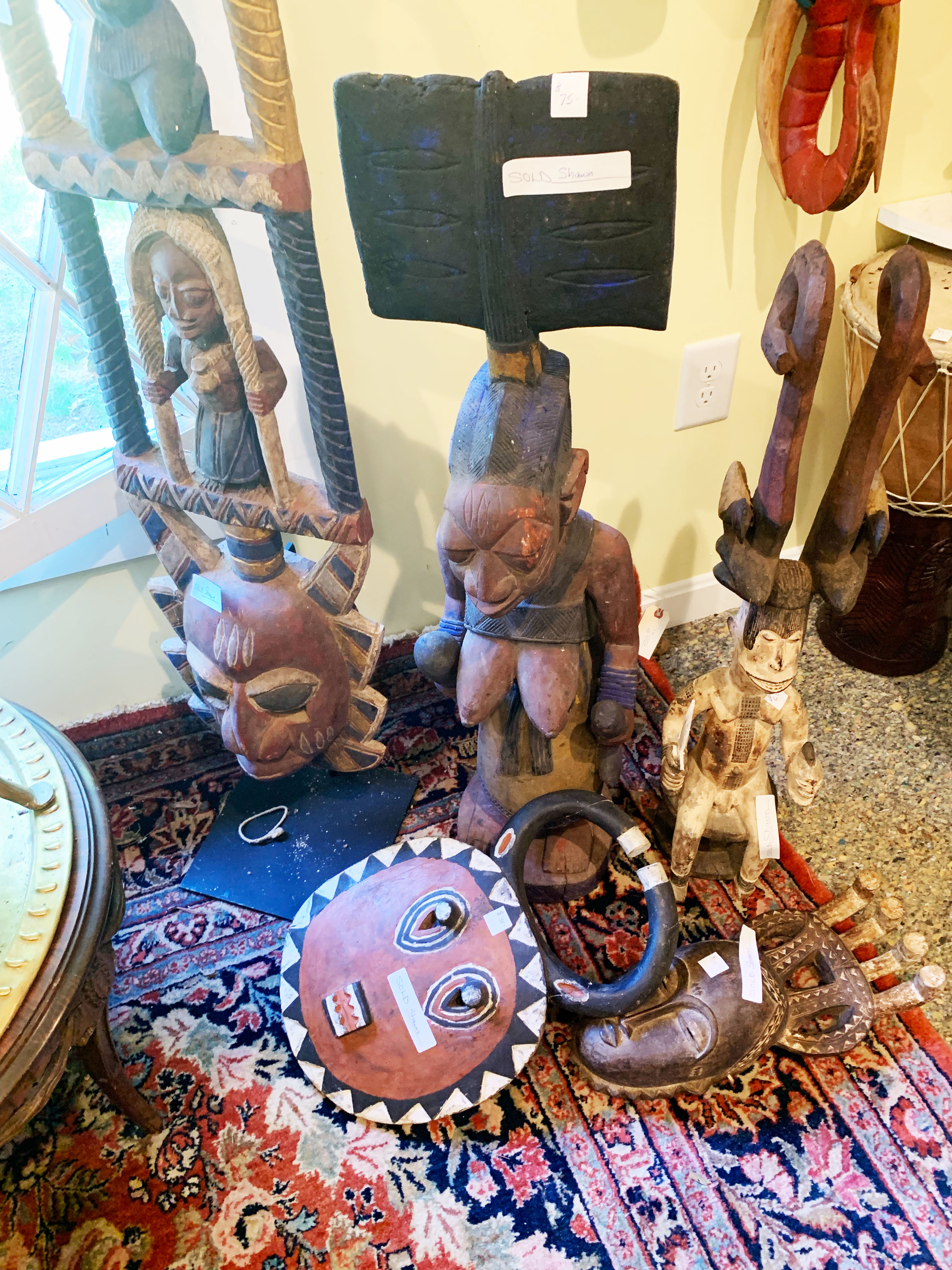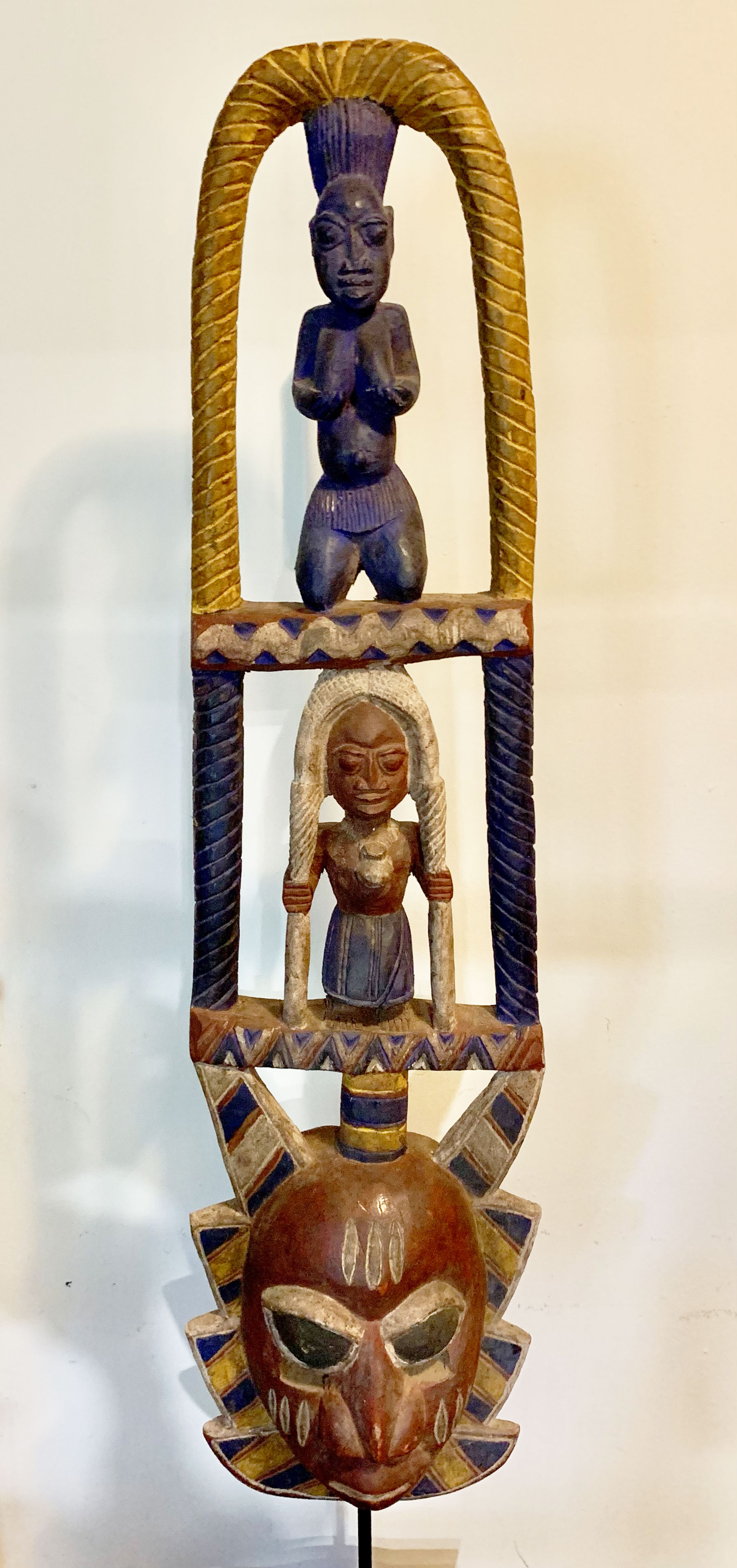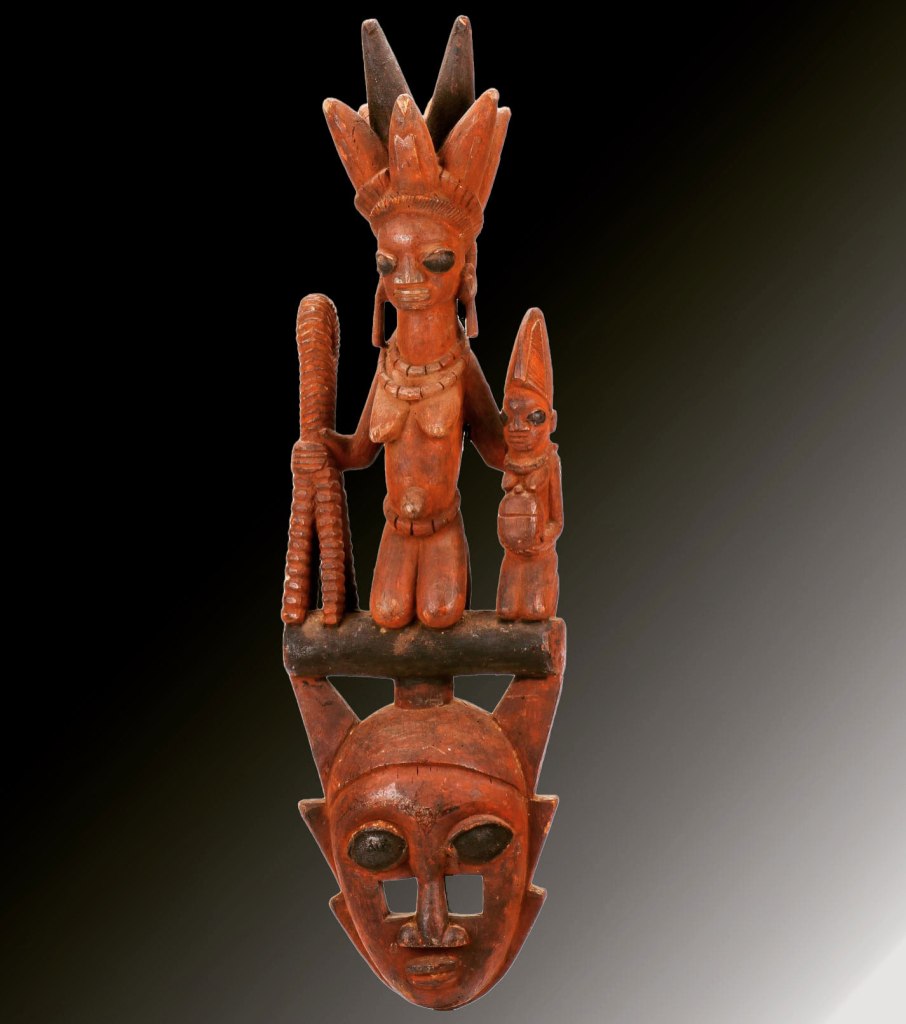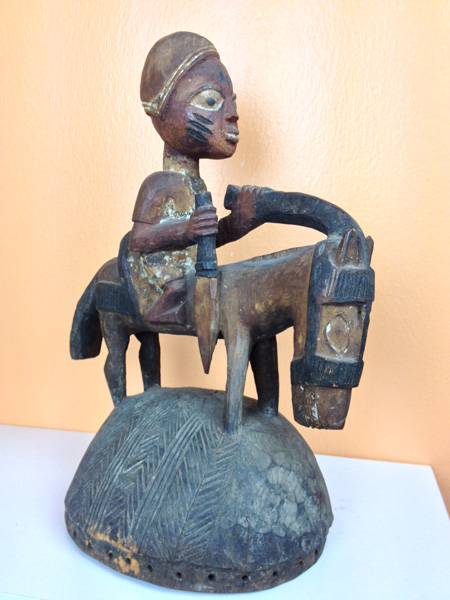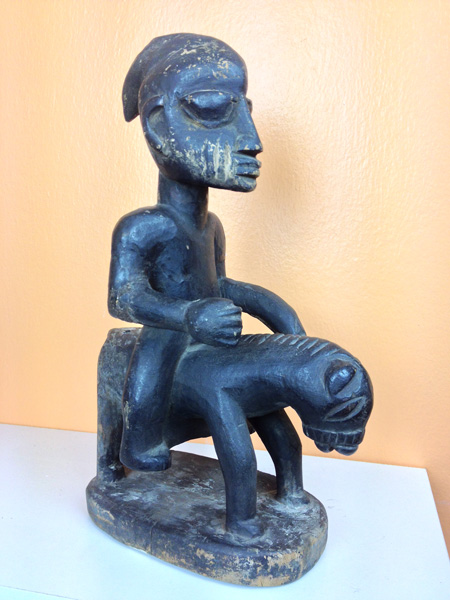Larence, Oya and Oshun.
June 21, 2022 Leave a comment
Michelle and I made an overnight road trip to Duxbury MA in June 2022 via DC, Baltimore, NY and CT. The event was an estate sale full of musical books, American folk art, portraits and African Tribal Art antiques. The collector was Larence Harley Smith (RIP), who passed the year prior at age 87. Although we thought getting there (even with a tire puncture on the turnpike) at 9am was great stuff, we couldn’t compare to his friend Lan Nelson who made the three day road trip from Kansas and arrived a bit before we did.
The estate sale staff were pretty great (special shout out to Diane McNamee, Marion Antiques) and kept everything orderly, even though the sale was spread between three buildings. I think our best purchase was a Sokoto terracotta, from Axel (a NJ collector) who also made the trip and who had some recent success selling pieces through Millea Brothers Auctions. We had been going back and forth for a couple years on the price and payment terms for this particular piece. This is the way. Axel had previously shared some advice that occasionally works at a live auction, “Throw in an early bid at a piece with a fairly high estimate range…. you never know”.
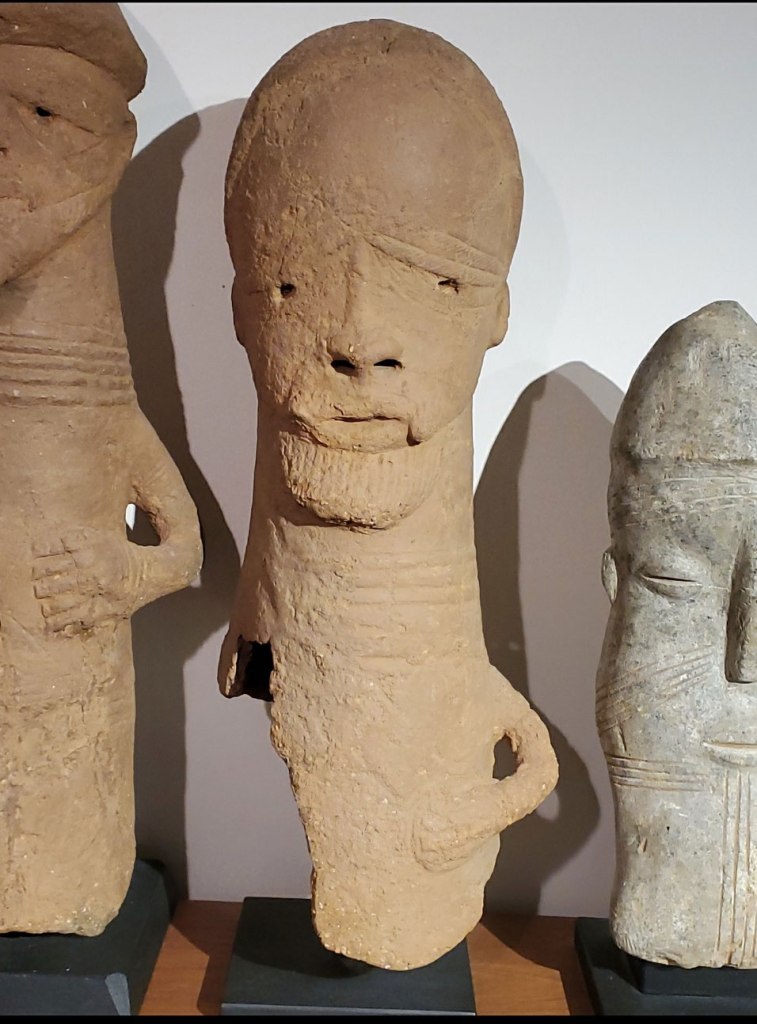
Back to Larence’s collection, the main pickup was the Ikenga, but the double tiered Oloju Foforo mask may prove to be the most interesting.
Oshun, the Yoruba orisha of the river is associated with the colors white, yellow, gold, and sometimes coral. Oya, is another of Shango’s wives and her colors are brown, dark red, and multicolored. What’s interesting is the first tier showing Shango in disguise, wearing locks of hair cut from either Oshun or Oya in order to avoid detection from unfriendly enemy forces. Based on the extensive use of yellow I think the mask represents team Oshun.
Larence travelled extensively and this was reflected in the diversity of his pieces. It was clear that he had been bitten but not limited by the African Art bug, since most of the proceeds of the estate sale were to be donated to a Native American charity. Lately I find myself leaning to pieces with at least a little provenance but the most important driver in buying pieces for a personal collection should be based on personal impact or attraction to the piece.
